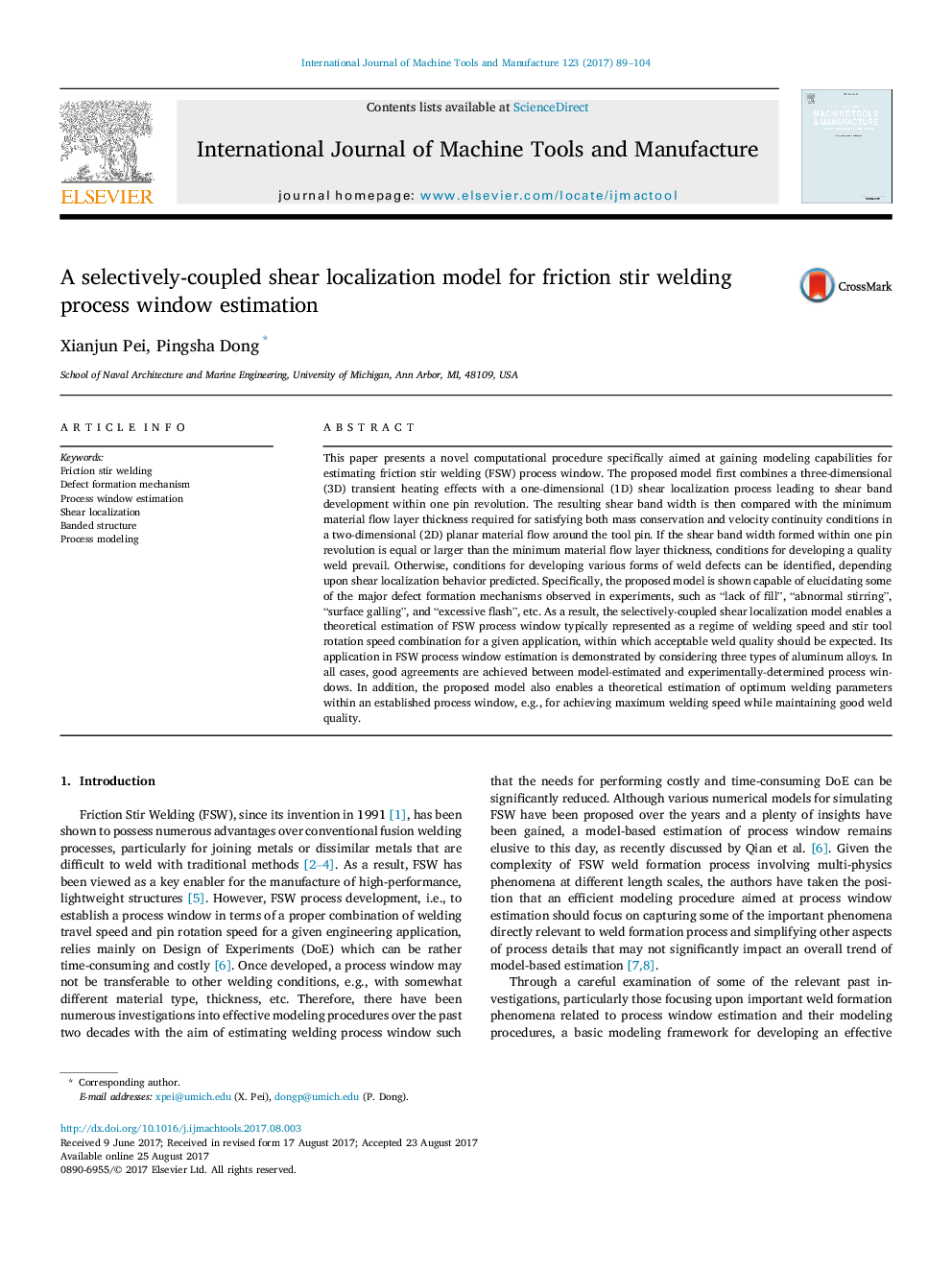| کد مقاله | کد نشریه | سال انتشار | مقاله انگلیسی | نسخه تمام متن |
|---|---|---|---|---|
| 5015683 | 1464471 | 2017 | 16 صفحه PDF | دانلود رایگان |
عنوان انگلیسی مقاله ISI
A selectively-coupled shear localization model for friction stir welding process window estimation
ترجمه فارسی عنوان
مدل محلی سازی برش برای انتخاب اصطکاک جهت برآورد پنجره فرایند جوش
دانلود مقاله + سفارش ترجمه
دانلود مقاله ISI انگلیسی
رایگان برای ایرانیان
کلمات کلیدی
اصطکاک جوشکاری مکانیسم شکل گیری نقص، برآورد پنجره فرآیند، محلی سازی برشی، ساختار بتنی، مدل سازی فرآیند،
موضوعات مرتبط
مهندسی و علوم پایه
سایر رشته های مهندسی
مهندسی صنعتی و تولید
چکیده انگلیسی
This paper presents a novel computational procedure specifically aimed at gaining modeling capabilities for estimating friction stir welding (FSW) process window. The proposed model first combines a three-dimensional (3D) transient heating effects with a one-dimensional (1D) shear localization process leading to shear band development within one pin revolution. The resulting shear band width is then compared with the minimum material flow layer thickness required for satisfying both mass conservation and velocity continuity conditions in a two-dimensional (2D) planar material flow around the tool pin. If the shear band width formed within one pin revolution is equal or larger than the minimum material flow layer thickness, conditions for developing a quality weld prevail. Otherwise, conditions for developing various forms of weld defects can be identified, depending upon shear localization behavior predicted. Specifically, the proposed model is shown capable of elucidating some of the major defect formation mechanisms observed in experiments, such as “lack of fill”, “abnormal stirring”, “surface galling”, and “excessive flash”, etc. As a result, the selectively-coupled shear localization model enables a theoretical estimation of FSW process window typically represented as a regime of welding speed and stir tool rotation speed combination for a given application, within which acceptable weld quality should be expected. Its application in FSW process window estimation is demonstrated by considering three types of aluminum alloys. In all cases, good agreements are achieved between model-estimated and experimentally-determined process windows. In addition, the proposed model also enables a theoretical estimation of optimum welding parameters within an established process window, e.g., for achieving maximum welding speed while maintaining good weld quality.
ناشر
Database: Elsevier - ScienceDirect (ساینس دایرکت)
Journal: International Journal of Machine Tools and Manufacture - Volume 123, December 2017, Pages 89-104
Journal: International Journal of Machine Tools and Manufacture - Volume 123, December 2017, Pages 89-104
نویسندگان
Xianjun Pei, Pingsha Dong,
